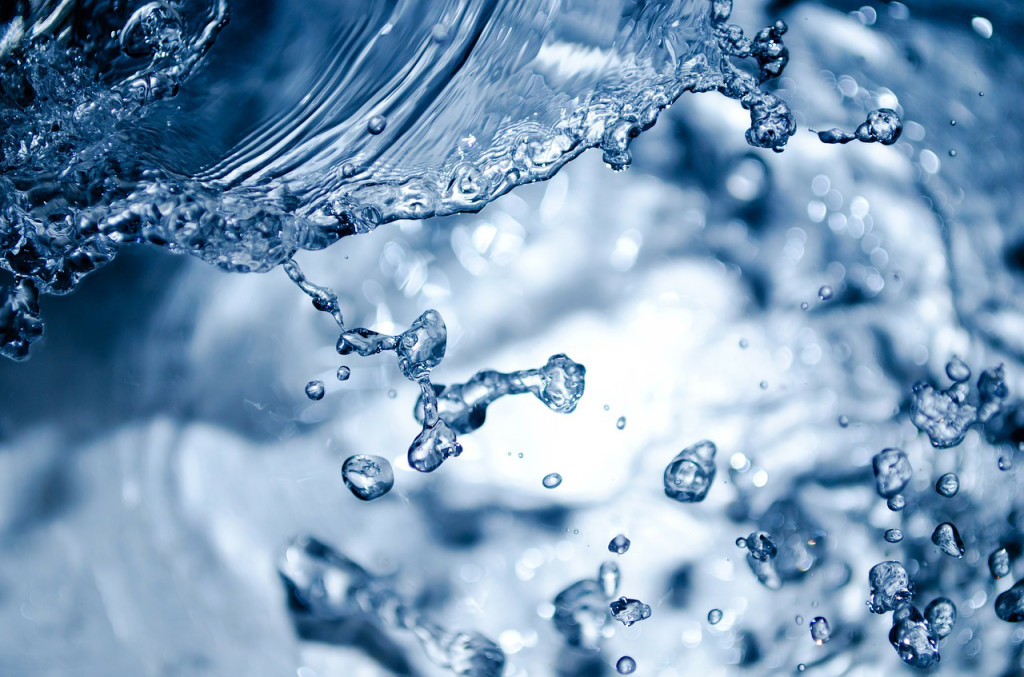 NOTE FROM SWEET GREENS: This post, A Substitute for Clean Water: There is None was written by Jenna. Jenna is a freelance writer who writing focuses on eco-lifestyle, health and wellness.
NOTE FROM SWEET GREENS: This post, A Substitute for Clean Water: There is None was written by Jenna. Jenna is a freelance writer who writing focuses on eco-lifestyle, health and wellness.
That cool, clean water straight from the tap. I grew up with it. As an inhabitant of the Northeastern Washington to Boston population corridor in the United States, it was a sure bet that drinking whatever came from the tap would be safe, plentiful, clear and delicious.
It was on a trip to Philadelphia in the 1980s that I first saw water for sale in a supermarket. What’s the deal, I asked a friend. “Oh, we never drink the water from the tap,” the friend replied. “Not in this city, we don’t.”
Water reminds me of that very pointed cliche about freedom: You don’t understand what freedom is until you have it taken away from you.
Water falls into that category. You don’t appreciate clear, clean, fresh water until you have that taken away from you. Yes, I knew that states in the West viewed water in an entirely different manner that I was used to. Now, however, with energy companies seeking to using fracking methods to mine natural gas throughout the country — including the Northeast corridor — suddenly clean water is the talk of the town. We’re living now with a clean-water scare that is hard to overestimate. Where it takes us at this point is hard to say.
That said, clean water is tasteless, odorless, colorless. This makes it very hard to describe.
So, let’s describe what clean water is not. That is easier, even though it is much, much scarier.
The U.S. Environmental Protection Agency, in fact, can define what clean water is not supposed to be based on contaminants that include microorganisms, disinfection byproducts, disinfectants, inorganic chemicals, organic chemicals and radionuclide. That would be, in less scientific jargon, living organisms, chemicals of various types and varieties of radiation that could poison the water.
The EPA chart on pollutants quantifies the scare factor. The microorganism cryptosporidium, is safe only when it is not present — it has a zero tolerance level. If it makes it into your water, expect stomach aches, cramps and diarrhea. Where does it hail from? From human and animal fecal waste.
That happens to be the first containment on the list. There is, likewise, zero tolerance for Giardia lamblia, Legionella and various coli-form bacteria.
Disinfectants include chlorine, which can cause eye and nose irritation, stomach discomfort above its tolerance level. Inorganic substances include lead, which can cause delayed development and serious neurological damage in children and kidney problems in adults. Nitrates above 10 parts per million, can kill infants. Thallium at 0.0005 parts per million, can cause changes in the blood, intestine, kidney and liver problems, as well as hair loss.
The point is made: Messing with the water can quite simply kill you and does more frequently than most Americans realize. One Pacific Institute report from 2002 estimated that 135 million people would die from unhealthy drinking water between 2000 and 2020.
One rule of thumb holds that if your drinking water is unsafe, it is a good time to pack your bags and move. If your local well is unsafe, there is not much you can do about it.
Often, however, that isn’t the case, especially if the problem is unhealthy microorganisms. Water in that case can frequently treated (often with something that is also toxic) and left to flush itself clean again. If the source of the problem is found, water can return to health after some time has passed.
Whatever the problem, finding the source of the pollutants is key and this is one of the critical factors when it comes to fracking, which involves many, many drilling sites. As such, if the practice is proven to be unsafe, then there could be tens of thousands of wells each contaminating local water sources.
Many people turn to water purifying systems installed in their home, including the use of water softeners, filters and desalination techniques. Some systems use reverse osmosis. Others use descaling.
Descaling is sometimes called “salt free water softening,” as it seen as one of the basic alternatives to water softeners.
Much of the effort of water treatment in the home is to protect the pipes, the bathroom tiles and the kitchen utensils from a build of of residue that is created by hard water, which is water with a heavy concentration of minerals.
While minerals can build up on pipes and cooking ware, some minerals are good for you and are not harmful. Clean water, in that case, is a requirement for life. Clean, clear, fresh water softened with a private system, in that case, is a very popular luxury.





[…] By Jennie […]